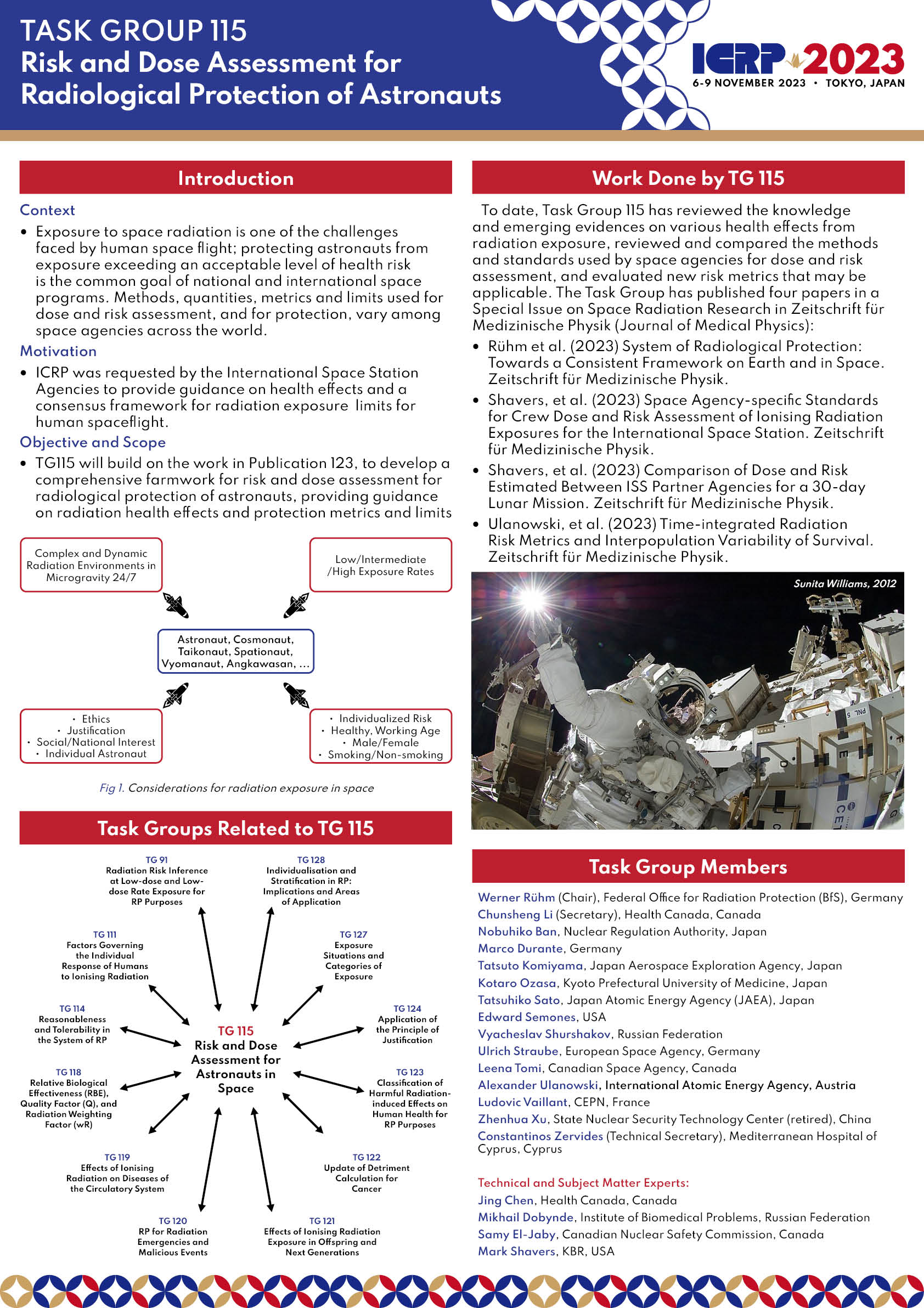Task Group 115
Risk and Dose Assessment for Radiological Protection of Astronauts
Under Committee 1
Aspects of radiological protection of astronauts in space have been addressed by ICRP in Publication 123 Assessment of Radiation Exposure of Astronauts in Space, published in 2013. This publication focused on the challenges in dosimetry related to the radiation fields in space which differ from those on Earth. It covered the radiation environment in space, quantities used in radiological protection, methods of measurement, radiation fields inside spacecraft and on planetary surfaces, radiation fields and doses in the human body, and a short section on operational radiological protection.
Currently, the various space agencies involved in human spaceflight use a variety of methods to assess dose and risk to their astronauts, and a variety of risk and dose protection quantities and restrictions. In 2018, agencies involved in the International Space Station (Canadian Space Agency, European Space Agency, Federal Space Agency of the Russian Federation, Japan Aerospace Exploration Agency, and National Aeronautics and Space Administration) proposed collaboration with ICRP to examine effects which may impact crew health and mission success, and to develop a common health risk assessment framework and recommendations on exposure limits for exploration-class human spaceflight missions.
The current Task Group will build on the work in Publication 123, to develop a comprehensive framework for risk and dose assessment for radiological protection of astronauts, which might also be of relevance for space tourism. This will include: a set of basic objectives; a review of the current understanding of effects and risks from space radiation; a broadly-applicable risk and dose assessment methodology (noting that dose assessment has already been addressed in Publication 123); and, an assessment of the use of risk as a radiological protection quantity.
ICRP 2023 Poster
Papers
Members of the Task Group have published a number of papers during the development of the work:
| Werner Rühm (Chair), Federal Office for Radiation Protection (BfS), Germany | ||
| Chunsheng Li (Secretary), Health Canada, Canada | ||
| Nobuhiko Ban (Member), Nuclear Regulation Authority, Japan | ||
| Alina Brenner (Member), Japan | ||
| Marco Durante (Member), Germany | ||
| Anna Fogtman (Member), ESA, | ||
| Tatsuto Komiyama (Member), Japan Aerospace Exploration Agency, Japan | ||
| Tatsuhiko Sato (Member), Japan Atomic Energy Agency (JAEA), Japan | ||
| Edward Semones (Member), USA | ||
| Mark Shavers (Member), NASA, USA | ||
| Vyacheslav Shurshakov (Member), Russian Federation | ||
| Ulrich Straube (Member), Retired, Germany | ||
| Leena Tomi (Member), Canadian Space Agency , Canada | ||
| Alexander Ulanowski (Member), International Atomic Energy Agency, Austria | ||
| Ludovic Vaillant (Member), CEPN, France | ||
| Zhenhua Xu (Member), State Nuclear Security Technology Center (retired), China |
